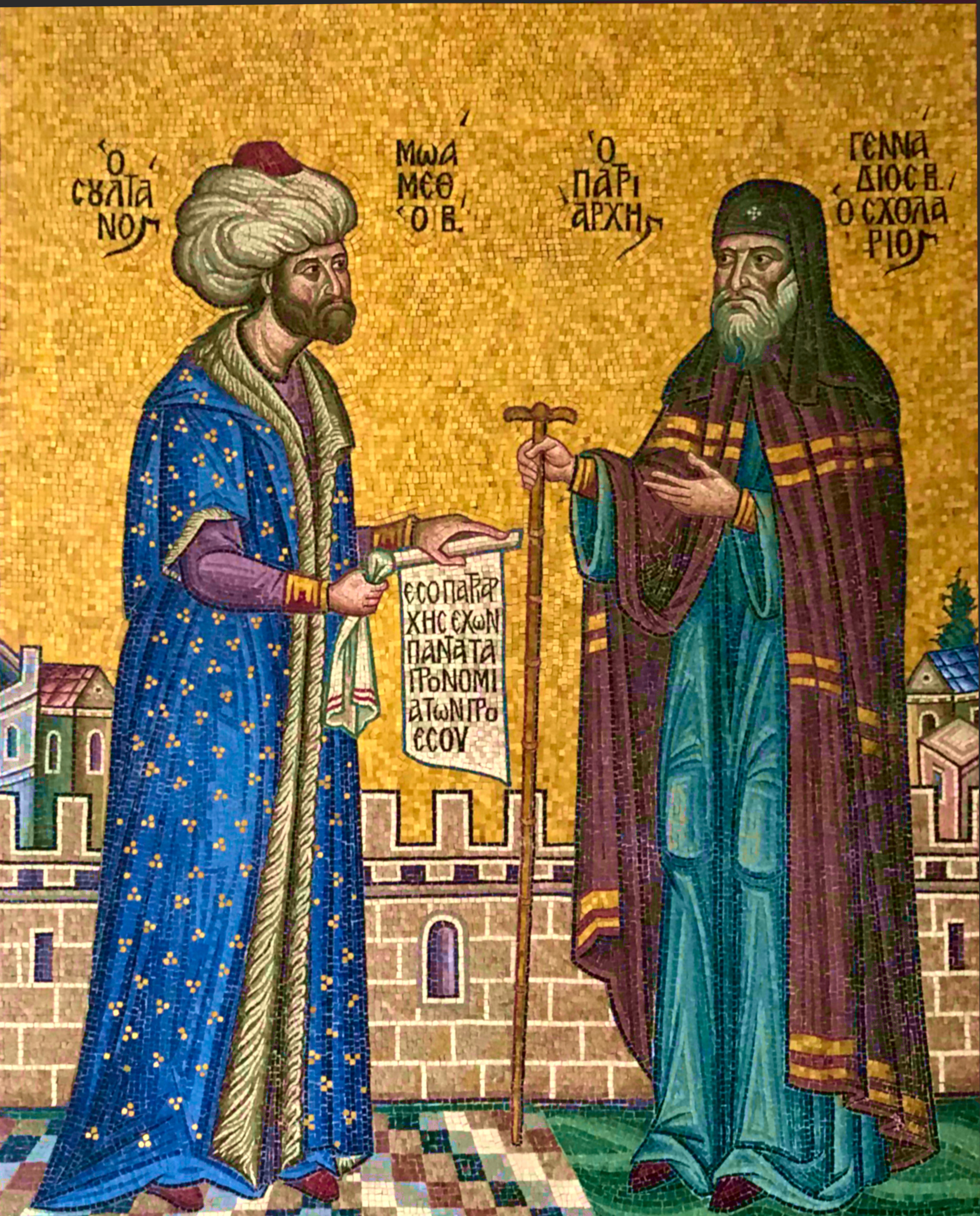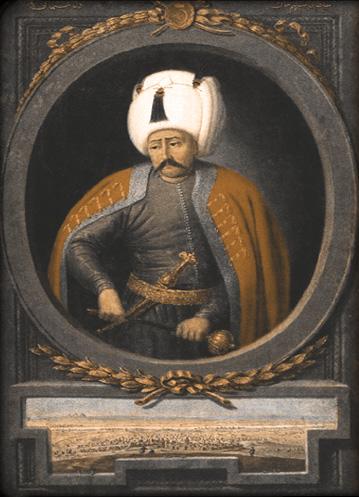|
Armenian Millet
The Armenian millet ( tr, Ermeni milleti) was the Ottoman millet (autonomous ethnoreligious community) of the Armenian Apostolic Church. It initially included not just Armenians in the Ottoman Empire but members of other Christian churches including the Coptic Church, Chaldean Catholic Church, Ethiopian Orthodox Tewahedo Church, and Syriac Orthodox Church, although most of these groups obtained their own millet in the nineteenth century. Mehmet II separated them from the Greek Orthodox because of the disagreements that they had over orthodoxy. The members of the millet were not only able to handle things autonomously, they had the legal status to bring a case to the Islamic courts. The Armenian millet did not have the ability to hold authority over the many people they were supposed to, and the Armenian patriarch's power had no real authority in Istanbul being so far from Anatolia. See also * Rum millet Rūm millet (millet-i Rûm), or "''Roman nation''", was the name of the E ... [...More Info...] [...Related Items...] OR: [Wikipedia] [Google] [Baidu] |
Millet (Ottoman Empire)
In the Ottoman Empire, a millet (; ar, مِلَّة) was an independent court of law pertaining to "personal law" under which a confessional community (a group abiding by the laws of Muslim Sharia, Christian Canon law, or Jewish Halakha) was allowed to rule itself under its own laws. Despite frequently being referred to as a "system", before the nineteenth century the organization of what are now retrospectively called millets in the Ottoman Empire was not at all systematic. Rather, non-Muslims were simply given a significant degree of autonomy within their own community, without an overarching structure for the 'millet' as a whole. The notion of distinct millets corresponding to different religious communities within the empire would not emerge until the eighteenth century. Subsequently, the existence of the millet system was justified through numerous foundation myths linking it back to the time of Sultan Mehmed the Conqueror (r. 1451–81), although it is now understood that ... [...More Info...] [...Related Items...] OR: [Wikipedia] [Google] [Baidu] |
Armenian Apostolic Church
, native_name_lang = hy , icon = Armenian Apostolic Church logo.svg , icon_width = 100px , icon_alt = , image = Էջմիածնի_Մայր_Տաճար.jpg , imagewidth = 250px , alt = , caption = Etchmiadzin Cathedral, the mother church of the Armenian Apostolic Church , abbreviation = , type = , main_classification = Eastern Christian , orientation = Oriental Orthodox , scripture = Septuagint, New Testament, Armenian versions , theology = Miaphysitism , polity = Episcopal , governance = Mother See of Holy Etchmiadzin , structure = , leader_title = Head , leader_name = Catholicos of All Armenians Karekin II , leader_title1 = , leader_name1 = , leader_title2 = , leader_name2 = , leader_title3 = , leader_name3 = , associations ... [...More Info...] [...Related Items...] OR: [Wikipedia] [Google] [Baidu] |
Armenians In The Ottoman Empire
Armenians in the Ottoman Empire (or Ottoman Armenians) mostly belonged to either the Armenian Apostolic Church or the Armenian Catholic Church. They were part of the Armenian millet until the Tanzimat, Tanzimat reforms in the nineteenth century equalized all Ottoman citizens before the law. Armenians were a significant minority in the Empire. They played a crucial role in Ottoman industry and commerce, and Armenian communities existed in almost every major city of the empire. Despite their importance, Armenians were heavily persecuted by the Ottoman authorities especially from the latter half of the 19th century, culminating in the Armenian Genocide. Background The Ottomans introduced a number of unique approaches to governing into the traditions of Muslim world, Islam. Islamic culture did not separate religious and secular matters. At first, the Sultan was the highest power in the land and had control over almost everything. However, a state organization began to take a mo ... [...More Info...] [...Related Items...] OR: [Wikipedia] [Google] [Baidu] |
Coptic Church
The Coptic Orthodox Church ( cop, Ϯⲉⲕ̀ⲕⲗⲏⲥⲓⲁ ⲛ̀ⲣⲉⲙⲛ̀ⲭⲏⲙⲓ ⲛ̀ⲟⲣⲑⲟⲇⲟⲝⲟⲥ, translit=Ti.eklyseya en.remenkimi en.orthodoxos, lit=the Egyptian Orthodox Church; ar, الكنيسة القبطية الأرثوذكسية, translit=al-Kanīsa al-Qibṭiyya al-ʾUrṯūḏuksiyya), also known as the Coptic Orthodox Patriarchate of Alexandria, is an Oriental Orthodox Christian church based in Egypt, servicing Africa and the Middle East. The head of the church and the See of Alexandria is the Pope of Alexandria on the Holy Apostolic See of Saint Mark, who also carries the title of Father of fathers, Shepherd of Shepherds, Ecumenical Judge and the thirteenth among the Apostles. The See of Alexandria is titular, and today, the Coptic Pope presides from Saint Mark's Coptic Orthodox Cathedral in the Abbassia District in Cairo. The church follows the Coptic Rite for its liturgy, prayer and devotional patrimony. The church has approximately ... [...More Info...] [...Related Items...] OR: [Wikipedia] [Google] [Baidu] |
Chaldean Catholic Church
, native_name_lang = syc , image = Assyrian Church.png , imagewidth = 200px , alt = , caption = Cathedral of Our Lady of Sorrows Baghdad, Iraq , abbreviation = , type = , main_classification = Eastern Catholic , orientation = Syriac Christianity (Eastern) , scripture = Peshitta , theology = Catholic theology , polity = , governance = Holy Synod of the Chaldean Church , structure = , leader_title = Pope , leader_name = Francis , leader_title1 = Patriarch , leader_name1 = Louis Raphaël I Sako , leader_title2 = , leader_name2 = , leader_title3 = , leader_name3 = , fellowships_type = , fellowships = , fellowships_type1 = , fellowships1 = , division_type = , division = , division_type1 = , division1 = , ... [...More Info...] [...Related Items...] OR: [Wikipedia] [Google] [Baidu] |
Ethiopian Orthodox Tewahedo Church
The Ethiopian Orthodox Tewahedo Church ( am, የኢትዮጵያ ኦርቶዶክስ ተዋሕዶ ቤተ ክርስቲያን, ''Yäityop'ya ortodoks täwahedo bétäkrestyan'') is the largest of the Oriental Orthodox Churches. One of the few Christian churches in sub-Saharan Africa originating before European colonization of the continent, the Ethiopian Orthodox Tewahedo Church dates back to the acceptance of Christianity by the Kingdom of Aksum in 330, and has between 36 million and 49.8 million adherents in Ethiopia. It is a founding member of the World Council of Churches. The Ethiopian Orthodox Tewahedo Church is in Communion (Christian), communion with the other Oriental Orthodox churches (the Eritrean Orthodox Tewahedo Church, the Coptic Orthodox Church of Alexandria, the Malankara Orthodox Syrian Church, the Armenian Apostolic Church, and the Syriac Orthodox Church). The Ethiopian Orthodox Tewahedo Church had been administratively part of the Coptic Orthodox Church of Alexan ... [...More Info...] [...Related Items...] OR: [Wikipedia] [Google] [Baidu] |
Syriac Orthodox Church
, native_name_lang = syc , image = St_George_Syriac_orthodox_church_in_Damascus.jpg , imagewidth = 250 , alt = Cathedral of Saint George , caption = Cathedral of Saint George, Damascus, Syria , type = Church of Antioch, Antiochian , main_classification = Eastern Christianity, Eastern Christian , orientation = Oriental Orthodoxy, Oriental Orthodox , scripture = Peshitta , theology = Miaphysitism , polity = Episcopal polity, Episcopal , structure = Koinonia, Communion , leader_title = Patriarch , leader_name = Ignatius Aphrem II Syriac Orthodox Patriarch of Antioch and All the East, Patriarch , fellowships_type = Catholicos of India, Catholicate of India , fellowships = Malankara Syriac Orthodox Church , associations = World Council of Churches , area = Middle East, India, and Assyrian–Chaldean� ... [...More Info...] [...Related Items...] OR: [Wikipedia] [Google] [Baidu] |
Rum Millet
Rūm millet (millet-i Rûm), or "''Roman nation''", was the name of the Eastern Orthodox Christian community in the Ottoman Empire. Despite being subordinated within the Ottoman political system, the community maintained a certain internal autonomy. Establishment and development After the fall of Constantinople to the Ottoman Empire in 1453, all Orthodox Christians were treated as a lower class of people. The Rum millet was instituted by Sultan Mehmet II who set himself to reorganise the state as the conscious heir of the East Roman Empire. The Orthodox congregation was included in a specific ethno-religious community under ''Graeco-Byzantine'' domination. Its name was derived from the former Eastern Roman (a.k.a. ''Byzantine'') subjects of the Ottoman Empire, but all Orthodox Greeks, Bulgarians, Albanians, Aromanians, Megleno-Romanians and Serbs, as well as Georgians and Middle Eastern Christians, were considered part of the same millet in spite of their differe ... [...More Info...] [...Related Items...] OR: [Wikipedia] [Google] [Baidu] |
Armenians From The Ottoman Empire
Armenians ( hy, հայեր, ''hayer'' ) are an ethnic group native to the Armenian highlands of Western Asia. Armenians constitute the main population of Armenia and the ''de facto'' independent Artsakh. There is a wide-ranging diaspora of around five million people of full or partial Armenian ancestry living outside modern Armenia. The largest Armenian populations today exist in Russia, the United States, France, Georgia, Iran, Germany, Ukraine, Lebanon, Brazil, and Syria. With the exceptions of Iran and the former Soviet states, the present-day Armenian diaspora was formed mainly as a result of the Armenian genocide. Richard G. Hovannisian, ''The Armenian people from ancient to modern times: the fifteenth century to the twentieth century'', Volume 2, p. 421, Palgrave Macmillan, 1997. Armenian is an Indo-European language. It has two mutually intelligible spoken and written forms: Eastern Armenian, today spoken mainly in Armenia, Artsakh, Iran, and the former Soviet repu ... [...More Info...] [...Related Items...] OR: [Wikipedia] [Google] [Baidu] |
History Of The Ottoman Empire
The Ottoman Empire was founded c. 1299 by Osman I as a small beylik in northwestern Asia Minor just south of the Byzantine capital Constantinople. The Ottomans first crossed into Europe in 1352, establishing a permanent settlement at Çimpe Castle on the Dardanelles in 1354 and moving their capital to Edirne (Adrianople) in 1369. At the same time, the numerous small Turkic states in Asia Minor were assimilated into the budding Ottoman sultanate through conquest or declarations of allegiance. As Sultan Mehmed II conquered Constantinople (today named Istanbul) in 1453, the state grew into a mighty empire, expanding deep into Europe, northern Africa and the Middle East. With most of the Balkans under Ottoman rule by the mid-16th century, Ottoman territory increased exponentially under Sultan Selim I, who assumed the Caliphate in 1517 as the Ottomans turned east and conquered western Arabia, Egypt, Mesopotamia and the Levant, among other territories. Within the next few decades, mu ... [...More Info...] [...Related Items...] OR: [Wikipedia] [Google] [Baidu] |
Nation
A nation is a community of people formed on the basis of a combination of shared features such as language, history, ethnicity, culture and/or society. A nation is thus the collective identity of a group of people understood as defined by those features. Some nations are equated with ethnic groups (see ethnic nationalism) and some are equated with affiliation to a social and political constitution (see civic nationalism and multiculturalism). A nation is generally more overtly political than an ethnic group. A nation has also been defined as a cultural-political community that has become conscious of its autonomy, unity and particular interests. The consensus among scholars is that nations are socially constructed and historically contingent. Throughout history, people have had an attachment to their kin group and traditions, territorial authorities and their homeland, but nationalism – the belief that state and nation should align as a nation state – did not become a pr ... [...More Info...] [...Related Items...] OR: [Wikipedia] [Google] [Baidu] |







